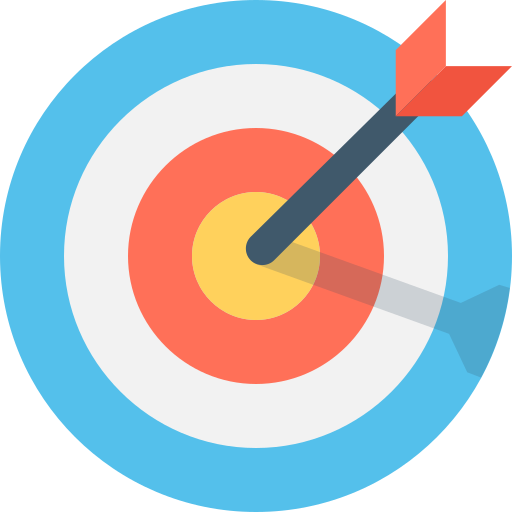Wearable Technology Market Size
The global wearable technology market size was valued at $82.95 billion in 2025 and is projected to reach $223.94 billion by 2031, growing at a CAGR of 18.0% during the forecast period.
Wearable Technology Market Overview
Wearable technology refers to devices that can be worn on the body, such as smartwatches, fitness trackers, and augmented reality headsets. These devices have gained significant traction in both consumer markets and business environments, offering numerous benefits that enhance productivity and operational efficiency.
Companies can leverage wearable technology to streamline processes by enabling real-time communication and data sharing among employees, which reduces the time spent on mundane tasks and enhances overall workflow. Additionally, wearables can improve workplace safety by monitoring health metrics and environmental hazards, thereby allowing for immediate alerts in case of emergencies. This not only protects employees but also minimizes potential liability for businesses.
Wearable Technology Market Dynamics
The wearable technologymarket is expected to witness significant growth in the future due to the increasing health awareness among consumers, rapid technological advancements and innovations in wearables, and growing demand for fitness and healthcare applications. However, the high costs associated with wearable devices, privacy and security concerns regarding data collection, and limited battery life affecting usability are restraining the growth of the market.
Furthermore, expansion into multiple application areas, including healthcare and military, development of smart clothing and advanced wearable tech products, and increasing adoption of wearables in remote health monitoring are the key trends propelling the wearable technology market.
Increasing Health Awareness among Consumers is Driving the Wearable Technology Market
The increasing health awareness among consumers is significantly impacting the wearable technology market by driving demand for devices that promote health monitoring and fitness tracking.
• For instance, Withings, known for its health-focused smartwatches and fitness trackers, has expanded its product line to include devices that monitor various health metrics, reflecting the growing consumer interest in personal health management.
Government initiatives also play a role; for example, the Robert Koch Institute in Germany launched the Datenspende study during the COVID-19 pandemic, utilizing data from wearables to track health metrics and predict outbreaks. This initiative not only highlighted the potential of wearables in public health but also encouraged consumer adoption as people became more conscious of their health data's importance.
• Moreover, companies like WHOOP have capitalized on this trend by offering subscription-based services for their fitness trackers, which provide insights into sleep, recovery, and overall wellness. Launched in 2015, WHOOP has gained popularity among athletes and fitness enthusiasts, emphasizing the shift towards data-driven health management.
• In 2020, Silvertree introduced the Silvertree Reach, a wearable designed for older adults that monitors health and safety while promoting independence.
This product aligns with the increasing awareness of health needs among aging populations.
Overall, these examples illustrate how rising health consciousness is fostering innovation and growth within the wearable technology market.
By Product Type, the Wrist Wear Segment is projected to be the Largest Segment in the Wearable Technology Market
Wrist Wear is the largest segment in the wearable technologymarket, driven by its convenience, multifunctionality, and growing health consciousness among consumers, urbanization and rising disposable incomes.
• Major companies such as Apple, Samsung, and Xiaomi have capitalized on this trend by launching innovative products that integrate advanced health monitoring features.
• For instance, Apple's introduction of the Apple Watch Series 7 in October 2021 included enhanced health tracking capabilities, such as blood oxygen monitoring and ECG functions, appealing to health-conscious consumers.
• Similarly, in India, the government’s Ayushman Bharat Digital Mission, launched in September 2021, promotes digital health solutions, which indirectly boosts the adoption of wristwear devices that can sync with healthcare applications.
• Furthermore, in August 2021, the increasing popularity of fitness trackers like Fitbit Charge 5, released reflects the rising consumer interest in personal health management.
It is clear that the demand for wristwear technology will continue to expand as consumers seek more integrated and sophisticated health monitoring solutions.
By Geography, Asia Pacific Holds the Largest Share in the Market Revenue
Asia Pacific holds the largest share of the wearable technologymarket, driven by combination of increasing health awareness, rapid urbanization, and technological advancements, country's strong manufacturing capabilities and a vast consumer base eager for health-monitoring devices.
• For example, Xiaomi has launched several affordable smartwatches and fitness bands, making health tracking accessible to a broader audience.
• Furthermore, companies such as Samsung and Fitbit are introducing advanced features in their products, such as ECG monitoring and stress tracking, which resonate with the growing consumer focus on health and fitness.
The integration of wearables with smartphones also enhances their functionality, contributing to their popularity in the region where smartphone penetration is high. Overall, these factors create a robust environment for the growth of wearable technology in Asia Pacific, as both consumers and governments increasingly prioritize health and wellness solutions.
Key Target Audience:
• Consumers
• Healthcare Providers
• Fitness Enthusiasts
• Technology Companies
List of the Key Players Profiled in the Report Includes:
• Samsung Group
• Apple, Inc.
• Fitbit, Inc.
• Sony Corporation
• Xiaomi
• LG Electronics
• Huawei
• Microsoft Corporation
• Garmin Ltd
• Fossil Group
Recent Developments:
• In May 2025, Huawei launched the Watch 5 (42 mm / 46 mm) featuring the X‑Tap fingertip health sensor, real-time SpO₂ tracking, ECG, and up to 11 days battery, emphasizing health performance in premium wearables.
• In April 2025, Samsung was reported to be working on all-solid-state batteries for future Galaxy Rings and wearables, targeting 360 Wh/L energy density—a major leap in battery life and flexibility for thin, long-lasting wearable devices.
Market Segmentation:
The research report includes in-depth coverage of the industry analysis with size, share, and forecast for the below segments:
Market by, Type:
• Smart Glasses
• Virtual Reality (VR) Headsets
• Smart Jackets and Smart Rings
• Smart Watches
• Fit Bands
• Logistics & Warehouse
Market by, Product Type:
• Wrist Wear
• Eyewear
• Hearables
• Neckwear
• Bodywear
• Others Product Types
Market by, Technology:
• IoT Based
• Augmented Reality (AR) and Virtual Reality (VR)
• Other Technologies
Market by, End User:
• Health and Fitness
• Banking, Financial Services, and Insurance (BFSI)
• Gaming and Entertainment
• Enterprise
• Fashion
• Travel
• Lifestyle
• Consumer Applications
• Education
Market by, Geography:
The wearable technology market report also analyzes the major geographic regions and countries of the market. The regions and countries covered in the study include:
• North America (The United States, Canada, Mexico), Market Estimates, Forecast & Opportunity Analysis
• Europe (Germany, France, UK, Italy, Spain, Rest of Europe), Market Estimates, Forecast & Opportunity Analysis
• Asia Pacific (China, Japan, India, South Korea, Australia, New Zealand, Rest of Asia Pacific), Market Estimates, Forecast & Opportunity Analysis
• South America (Brazil, Argentina, Chile, Rest of South America), Market Estimates, Forecast & Opportunity Analysis
• Middle East & Africa (UAE, Saudi Arabia, Qatar, Iran, South Africa, Rest of Middle East & Africa), Market Estimates, Forecast & Opportunity Analysis
The report offers insights into the following aspects:
• Analysis of major market trends, factors driving, restraining, threatening, and providing opportunities for the market.
• Analysis of the market structure by identifying various segments and sub-segments of the market.
• Understand the revenue forecast of the market for North America, Europe, Asia-Pacific, South America, and Middle East & Africa.
• Analysis of opportunities by identification of high-growth segments/revenue pockets in the market.
• Understand major player profiles in the market and analyze their business strategies.
• Understand competitive developments such as joint ventures, alliances, mergers and acquisitions, and new product launches in the market.
Table Of Content
1 Market Introduction
1.1 Market Definition
1.2 Research Scope and Segmentation
1.3 Stakeholders
1.4 List of Abbreviations
2 Executive Summary
3 Research Methodology
3.1 Identification of Data
3.2 Data Analysis
3.3 Verification
3.4 Data Sources
3.5 Assumptions
4 Market Dynamics
4.1 Market Drivers
4.2 Market Restraints
4.3 Market Opportunities
4.4 Market Challenges
5 Porter's Five Force Analysis
5.1 Bargaining Power of Suppliers
5.2 Bargaining Power of Buyers
5.3 Threat of New Entrants
5.4 Threat of Substitutes
5.5 Competitive Rivalry in the Market
6 Global Wearable Technology Market by, Type
6.1 Overview
6.2 Smart Glasses
6.3 Virtual Reality (VR) Headsets
6.4 Smart Jackets and Smart Rings
6.5 Smart Watches
6.6 Fit Bands
6.7 Logistics & Warehouse
7 Global Wearable Technology Market by, Product Type
7.1 Overview
7.2 Wrist Wear
7.3 Eyewear
7.4 Hearables
7.5 Neckwear
7.6 Bodywear
7.7 Others Product Types
8 Global Wearable Technology Market by, Technology
8.1 Overview
8.2 IoT Based
8.3 Augmented Reality (AR) and Virtual Reality (VR)
8.4 Other Technologies
9 Global Wearable Technology Market by, End User
9.1 Overview
9.2 Health and Fitness
9.3 Banking, Financial Services, and Insurance (BFSI)
9.4 Gaming and Entertainment
9.5 Enterprise
9.6 Fashion
9.7 Travel
9.8 Lifestyle
9.9 Consumer Applications
9.10 Education
10 Global Wearable Technology Market by, Geography
10.1 Overview
10.2 North America
10.2.1 US
10.2.2 Canada
10.2.3 Mexico
10.3 Europe
10.3.1 Germany
10.3.2 France
10.3.3 UK
10.3.4 Italy
10.3.5 Spain
10.3.6 Rest of Europe
10.4 Asia Pacific
10.4.1 China
10.4.2 Japan
10.4.3 India
10.4.4 South Korea
10.4.5 Australia
10.4.6 New Zealand
10.4.7 Rest of Asia Pacific
10.5 South America
10.5.1 Brazil
10.5.2 Argentina
10.5.3 Chile
10.5.4 Rest of South America
10.6 Middle East & Africa
10.6.1 UAE
10.6.2 Saudi Arabia
10.6.3 Qatar
10.6.4 Iran
10.6.5 South Africa
10.6.6 Rest of Middle East & Africa
11 Key Developments
12 Company Profiling
12.1 Samsung Group
12.1.1 Business Overview
12.1.2 Product/Service Offering
12.1.3 Financial Overview
12.1.4 SWOT Analysis
12.1.5 Key Activities
12.2 Apple, Inc.
12.3 Fitbit, Inc.
12.4 Sony Corporation
12.5 Xiaomi
12.6 LG Electronics
12.7 Huawei
12.8 Microsoft Corporation
12.9 Garmin Ltd
12.10 Fossil Group
Report Details
| SKU Code | : DI2625 |
| Industry | : Electronics & Semiconductor |
| Region | : Global |
| Tables | : 168 |
| Format | : Electronic PDF |
| Published | : 2025 |
Choose License Type
Why Diligence Insights?
-

24/7 Research Support
We understand the various needs of our customers and remain always flexible in our approach. And we have a 24X7 client engagement team to ensure the best customer experience.
-

Tailor-Made Values
We consider each and every client’s business issues unique and exhibit precise solutions befitting your business goals and expectations.
-

Data Accuracy and Reliability
We offer a 360-degree view of the market to generate high standards and comprehensive data.
-

Customer Satisfaction
At Diligence Insights, we are committed to offering high-quality market research reports to our esteemed clients and focus on providing innovative solutions.
-

Information Security
We stand by the information security policy and stick to keeping your business information safe and secure.
